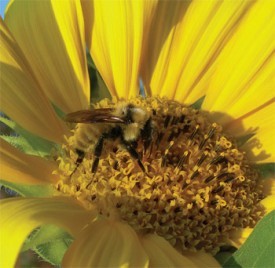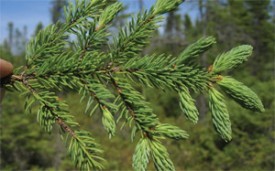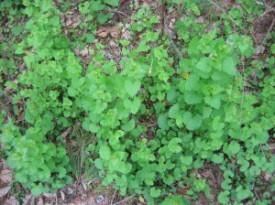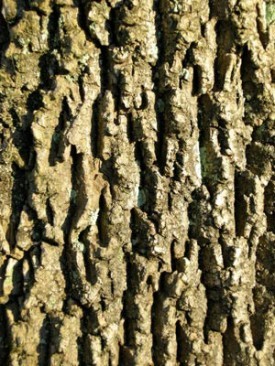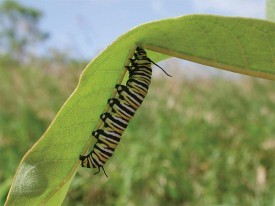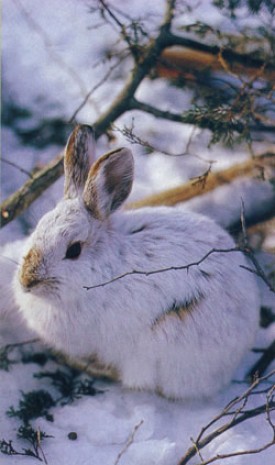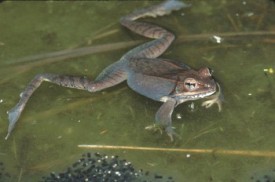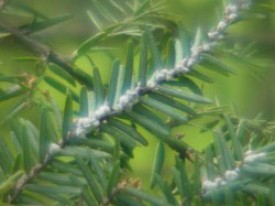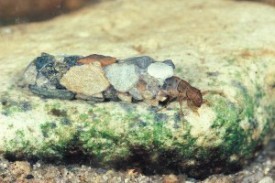The United States has been under assault for decades by a wide variety of alien plants and animals, and it is not often that one of these aliens faces a counterpunch. But in a collaborative…
Discoveries
Lessons From the Ice Storm
On December 11 and 12, 2008, a major ice storm coated trees in New England and upstate New York with layers of limb-snapping ice. While official tree damage estimates have yet to be released,…
Sneaky Squirrels
Next time you’re watching your favorite backyard squirrel, think about this: she may be watching you, too. Scientists have discovered that gray squirrels deliberately mislead onlookers…
Cascade in Still Water
Scientists have long known that high concentrations of pesticides can be toxic to frogs, toads, and salamanders. What is less well known is the effect of low, repeated doses of pesticides on…
A Song is Worth Five Stars
Would you choose to eat in a restaurant based solely on the cool jazz wafting out the windows and the hip name over the doorway? Or would you instead make a reservation based on reviews, a…
Picky Bees Suffer Most
The plight of bees has been a hot news topic over the past few years. Scientists are still exploring a number of theories to explain why pollinator populations are crashing; it could be…
Tree Leaves Regulate Their Own Temperature
When temperatures linger around 60 degrees, most people reach for light jackets or flannel shirts; conversely, when the mercury hits 80, we don shorts and short sleeves. Seventy degrees? Well…
Amphibians Move Out
There’s no shortage of studies about the effects of timber harvesting on amphibians. And there’s not much discrepancy between studies: generally, the heavier the cut, the fewer frogs,…
Invasive Bullies
When a plant or animal is moved from its native homeland to a new territory, and it thrives to the detriment of native plants and animals in that territory, it’s known as an invasive…
New Suspect in Frog Deaths
Kermit the Frog once sang, “It’s not easy bein’ green.” His melancholy was well placed. It is not a good time to be a frog: the world over, frogs and other amphibians…
Tums for Trees
Acid rain leaches calcium and other nutrients from forest ecosystems. In places where soil calcium levels are naturally low, where acid rain inputs are high, or especially where both these…
Proof Is in the Bark
Tree bark can act as a record of all sorts of events: lightning, fire, mechanical scrapes, and even the brief spark of youthful passion, carved with pocketknife, complete with heart, arrow,…
Milkweed Evolves To Shrug Off Predation
The adage that your enemies know your weaknesses best is especially true in the case of plants and predators that have co-evolved. As the predators evolve new strategies for attack, plants…
Thinned Thickets Lose Hare
Until a recent study, little was known about the effects of intensive forestry practices on snowshoe hares in northern forests. After studying hare populations following precommercial thinning…
Risky Childhood Begets Long-Legged Frogs
It’s easy to blame your parents if you’re shy or reckless or overly self-critical. Nature may play a role, but nurture (or junior high) is most often the culprit when it comes to…
Whey to Help Hemlocks
Hemlock woolly adelgid, the tiny but mighty scourge of hemlocks from Tennessee to as far north as southern Maine and New Hampshire, may soon face a worthy adversary: University of Vermont…
Wasting Disease Found in Deer Saliva and Muscles
As chronic wasting disease hovers at our doorstep, recent discoveries about how this disease spreads – and the parts of the deer it affects – should raise our collective alert…
Headwater Logging Makes Food for Trout
Brook trout are often cited as “indicator species” of stream health. They require clean, cold water, so finding them in abundance means you have an especially healthy stream. A…
Extra Calcium Boosts Maple Health
The results are in from a long-term study that has been measuring the response of sugar maples to calcium addition at the Hubbard Brook Experimental Forest in New Hampshire. They confirm…
Chasing the Carbon
A new study conducted by The Heinz Center, a national environmental and economic think tank, analyzes greenhouse-gas emissions from magazine and lumber production – from tree to final…




